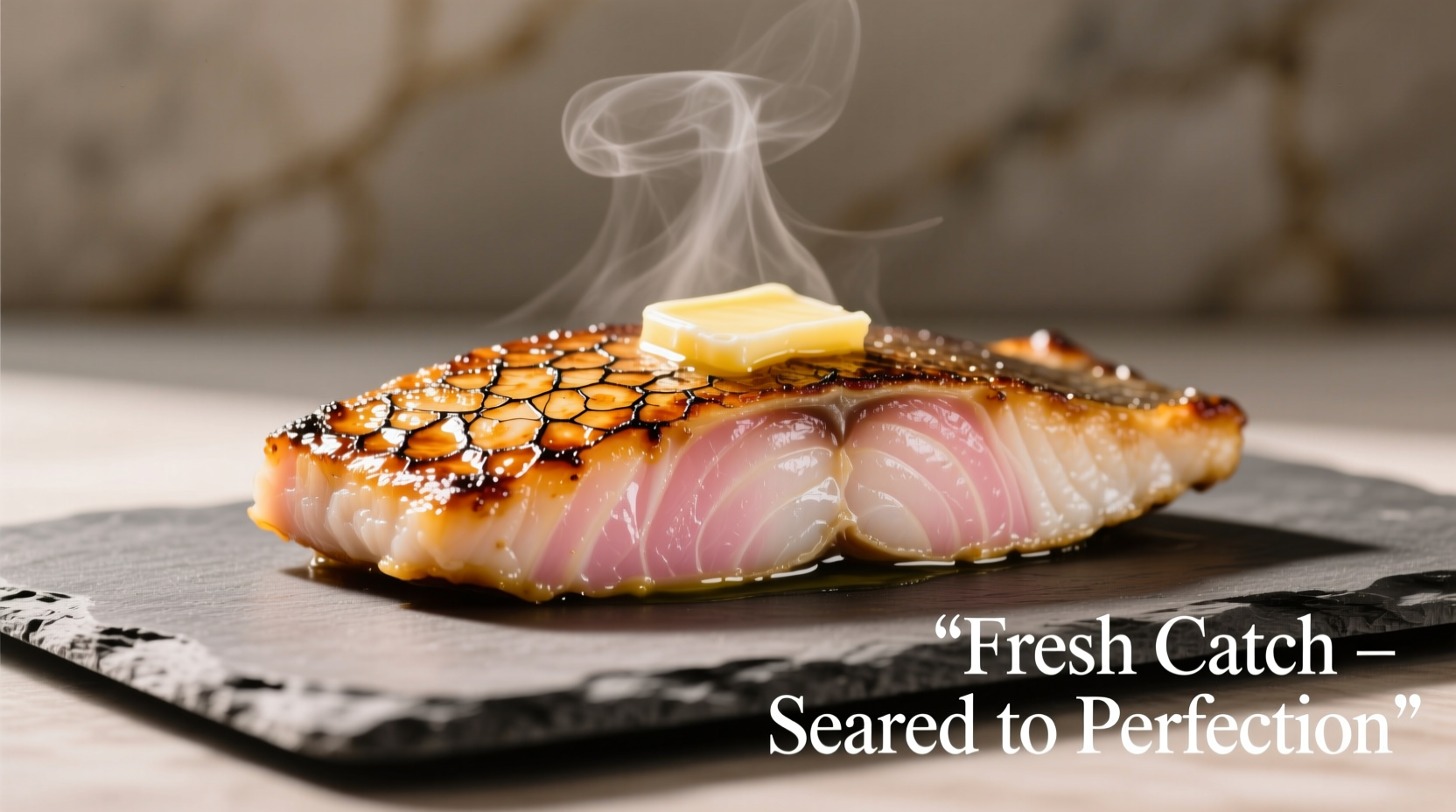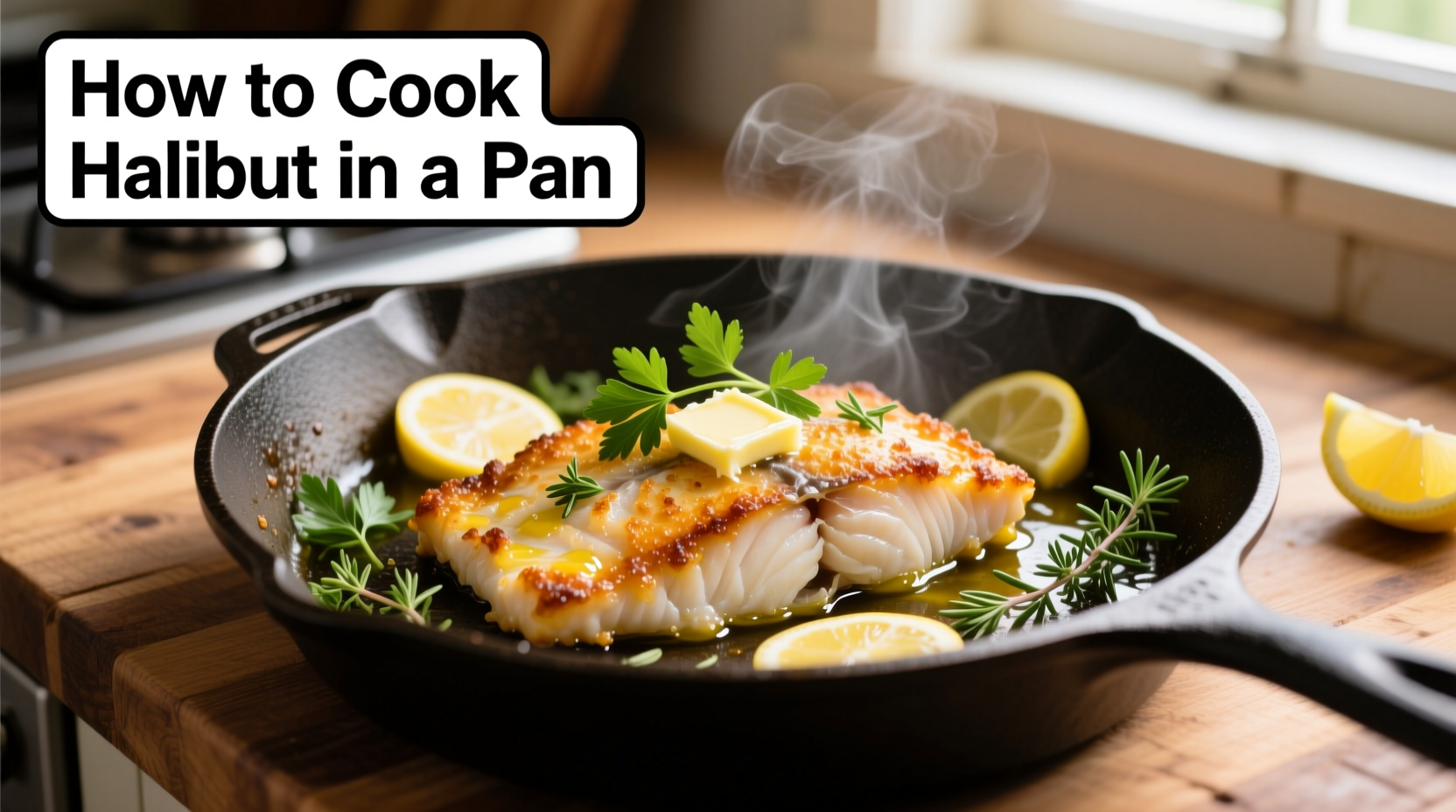Mastering pan-seared halibut transforms this delicate, premium fish into a restaurant-quality meal with minimal equipment. Unlike more fragile fish varieties, halibut's firm texture holds up beautifully to direct pan contact when handled correctly. Our tested method eliminates common pitfalls like sticking, overcooking, or uneven browning that plague home cooks.
Why Pan Cooking Excels for Halibut
Halibut's dense, meaty texture makes it uniquely suited for pan cooking compared to more delicate fish like sole or flounder. According to the FDA Seafood Guidelines, proper pan technique preserves halibut's nutritional profile while developing complex flavor compounds through the Maillard reaction. The USDA recommends cooking fish to a minimum internal temperature of 145°F (63°C) or until flesh is opaque and flakes easily, but for premium fish like halibut, professional chefs pull it at 130-135°F (54-57°C) since carryover cooking will reach the safe temperature during resting.
| Fish Type | Optimal Pan Temp | Cooking Time (1" thick) | Doneness Temp |
|---|---|---|---|
| Halibut | Medium-high (375°F) | 4-6 min/side | 130-135°F |
| Salmon | Medium (350°F) | 5-7 min/side | 125-130°F |
| Sea Bass | Medium-high (375°F) | 3-5 min/side | 125-130°F |
Essential Equipment & Ingredients Checklist
You'll need:
- 12-inch heavy-bottomed skillet (cast iron or stainless steel)
- 1-1.5 inch thick halibut fillets (about 6-8 oz each)
- High smoke-point oil (avocado or grapeseed)
- Salted butter (2 tbsp)
- Fresh lemon (1 half for cooking, half for serving)
- Kosher salt and freshly ground black pepper
- Paprika or smoked paprika (optional)
Why stainless steel or cast iron? Non-stick pans rarely achieve the high temperatures needed for proper searing. The American Culinary Federation confirms that properly preheated stainless steel creates superior browning through controlled protein bonding that releases naturally when the crust forms.
Step-by-Step Cooking Process
Preparation Phase: 15 Minutes Before Cooking
Remove halibut from refrigerator 15 minutes before cooking. Pat fillets completely dry with paper towels - this critical step prevents steaming and ensures proper searing. Season generously with salt (1/4 tsp per fillet) and pepper on all sides. For enhanced flavor, add a light dusting of paprika. Let sit uncovered at room temperature while you prepare your station.

Pan Setup: Achieving the Right Temperature
Heat your empty skillet over medium-high heat for 3-4 minutes until evenly hot. Test readiness by sprinkling a few drops of water - they should dance and evaporate within 1-2 seconds. Add 1 tablespoon high smoke-point oil and swirl to coat. The oil should shimmer but not smoke. This temperature range (375°F) creates the ideal environment for crust formation without burning.
Cooking Phase: The Critical First Minutes
Place fillets skin-side down if skin-on, or presentation side down if skinless, pressing gently for 10 seconds to ensure full contact. Do not move for 4 minutes - this allows proper crust development. After 4 minutes, check for golden browning and natural release from the pan. If sticking, wait 30 seconds longer.
Add 1 tablespoon butter and half a lemon cut side down to the pan. Tilt pan and spoon hot oil over the top of the fillets continuously for 2 minutes. Flip carefully using a thin metal spatula and cook 3-4 minutes more until internal temperature reaches 130-135°F. For thicker cuts, finish in a 400°F oven for 2-3 minutes.
Resting Phase: Don't Skip This Step
Transfer halibut to a wire rack and rest for 5 minutes. This allows temperature equalization and prevents juice loss when cutting. During this time, the internal temperature will rise 5-10 degrees to the USDA recommended 145°F while maintaining optimal moisture.
Common Mistakes to Avoid
- Wet fish - Always pat thoroughly dry; moisture creates steam instead of sear
- Cold fish - Room temperature fillets cook evenly; fridge-cold causes uneven cooking
- Overcrowding - Cook one fillet per 6 inches of pan space to maintain temperature
- Peeking too soon - Wait full 4 minutes before checking to allow crust formation
- Overcooking - Halibut dries out quickly; use thermometer for precision
According to culinary research from the Culinary Institute of America, halibut loses approximately 20% of its moisture content when overcooked beyond 140°F. This scientific insight explains why precise temperature control makes such a dramatic difference in texture.
Serving Suggestions & Flavor Pairings
Serve immediately with the pan juices spooned over top. Classic accompaniments include:
- Lemon-dill sauce (Greek yogurt, lemon zest, fresh dill, garlic)
- Roasted asparagus or green beans
- Citrus-herb quinoa
- Garlic sautéed spinach
For wine pairing, choose a medium-bodied white like Chardonnay or Viognier. The Monterey Bay Aquarium's Seafood Watch program recommends selecting Pacific halibut from U.S. or Canadian fisheries for sustainable choices, as Atlantic stocks remain overfished.
Storage & Leftover Tips
Store leftovers in an airtight container in the refrigerator for up to 2 days. Reheat gently in a 275°F oven for 8-10 minutes until warmed through - never microwave as it makes fish rubbery. Leftover halibut works well in salads or fish tacos. According to FDA food safety guidelines, cooked fish should not remain in the temperature danger zone (40-140°F) for more than 2 hours.











 浙公网安备
33010002000092号
浙公网安备
33010002000092号 浙B2-20120091-4
浙B2-20120091-4